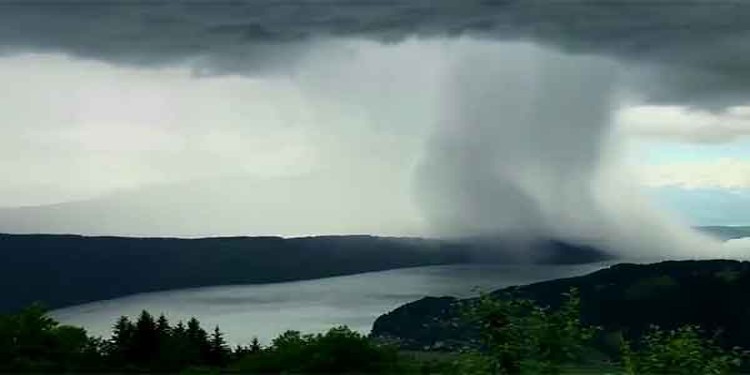Natural disasters can strike at any moment, leaving behind a trail of destruction and devastation. Among these, cloud bursts are one of nature’s most awe-inspiring and destructive events. Defined as an intense and sudden downpour of rainfall over a small area within a short period, cloud bursts have the potential to cause flash floods, landslides, and significant damage to human settlements, infrastructure, and the environment. In this blog post, we will delve deeper into cloud bursts, their causes, impacts, and measures to mitigate their effects.
Causes of Cloud Bursts:
Cloud bursts are primarily caused by convective clouds, which are formed when warm, moist air rises rapidly and condenses into water droplets. Several factors can trigger the occurrence of cloud bursts, including geographical features, such as mountainous regions, where warm air is forced upwards, leading to rapid cloud formation. Additionally, the collision of cold and warm air masses can create instability, enhancing the likelihood of intense rainfall.
Impacts of Cloud Bursts:
Flash Floods: The sudden and excessive rainfall associated with cloud bursts overwhelms the capacity of drainage systems and rivers, leading to rapid and severe flooding. These flash floods can wash away vehicles, damage buildings, and pose a significant risk to human life.
Landslides: The excessive saturation of soil due to intense rainfall can trigger landslides, particularly in hilly and mountainous regions. The unstable ground can result in massive soil and rock movement, posing a severe threat to infrastructure and causing loss of life.
Infrastructure Damage: Cloud bursts can wreak havoc on infrastructure, including roads, bridges, and buildings. The force of the flooding and landslides can lead to structural collapses, making transportation and rescue operations extremely challenging.
Agricultural Losses: The intense rainfall can drown crops and wash away topsoil, causing substantial damage to agricultural lands. This can have long-term implications for food security and the livelihoods of farmers.
Environmental Consequences: Cloud bursts can result in the erosion of soil, increased sedimentation in rivers, and damage to ecosystems. The sudden influx of water can disturb the delicate balance of flora and fauna, impacting biodiversity and water quality.
Mitigation and Preparedness:
Early Warning Systems: Developing effective early warning systems is crucial in mitigating the impact of cloud bursts. Weather monitoring stations, radar systems, and satellite imagery can provide valuable information about approaching weather systems, enabling authorities to issue timely alerts.
Infrastructure Planning: Incorporating climate-resilient designs and engineering techniques in infrastructure development can help minimize the impact of cloud bursts. Proper drainage systems, reinforced foundations, and slope stabilization measures can enhance the resilience of buildings and roads.
Afforestation and Watershed Management: Planting trees in vulnerable areas and implementing watershed management practices can help reduce soil erosion and regulate water flow during heavy rainfall events.
Community Awareness and Preparedness: Educating communities about the risks associated with cloud bursts and promoting preparedness measures, such as creating emergency kits and evacuation plans, can save lives and minimize the impact of disasters.
Conclusion:
Cloud bursts are natural phenomena that demand our attention and preparedness. Understanding the causes and impacts of cloud bursts is essential in developing effective strategies to mitigate their effects. Through improved early warning systems, infrastructure planning, and community preparedness, we can enhance our resilience to these catastrophic events. Ultimately, it is our collective responsibility to protect lives, property, and the environment in the face of such natural disasters.




